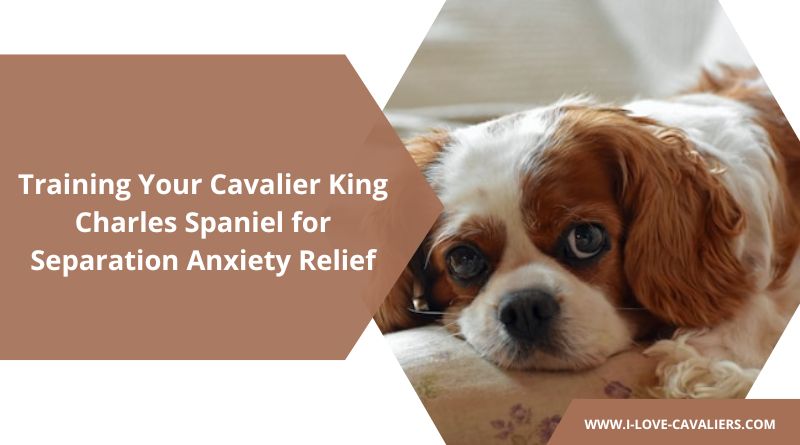Ever found yourself worried about your Cavalier King Charles Spaniel’s sad puppy eyes as you leave for work? Separation anxiety can hit this loving breed hard, turning your departure into a daily heartbreak.
These sensitive souls are renowned for their strong attachment to their humans, often leading to distressed behaviors when left alone. Think unwanted barking marathons or a chewed-up pair of shoes as a welcome home gift. It’s not just a phase—it’s a cry for help.
So, what can you do to ease your furry friend’s worry lines when it’s time for you to head out? You’re not alone in this furry predicament, and thankfully, training holds the key to transforming those whimpers into tail wags.
Yes, the journey requires patience and consistency, but don’t fret—your devotion will pay off. Let’s embark on this training adventure together, one paw at a time.
Understanding Separation Anxiety in Cavalier King Charles Spaniels
When you notice your Cavalier’s mood dipping as you grab your keys, it’s time to understand separation anxiety and its impact on your furry friend.
Recognizing the Signs
You know your Cavalier King Charles Spaniel the best. When they’re facing separation anxiety, here’s what you might observe:
- Excessive barking: A constant vocal performance when you step out indicates distress.
- Destructive behavior: Pillows torn apart? They’re likely channeling their anxiety through chewing.
- Whining, pacing, and howling: It’s like a sad song on repeat, accompanied by restless movement.
- ‘Accidents’ indoors: A house-trained Cavalier urinating or defecating could be signaling anxiety.
- Changes in temperament: From your normally jovial pup to a tense, mopey dog, note these mood swings.
The Role of Genetics and Health
Your Cavalier’s separation anxiety isn’t just an emotional response; it’s woven into their DNA. Here’s what’s at play:
- Genetics: Cavaliers are bred companions, genetically inclined to be by your side.
- Health issues: Keep an eye on your Cavalier’s health, as conditions like syringomyelia or heart problems can influence their anxiety levels.
Understanding these aspects of separation anxiety can guide you in training your Cavalier to feel secure, even when you’re away.
Preventing and Managing Separation Anxiety
Let’s give your Cavalier King Charles Spaniel the best shot at a happy, anxiety-free life. Addressing separation anxiety takes a blend of creating the right environment, establishing solid routines, and implementing effective training strategies.
Creating a Supportive Environment
Your home is your Cavalier’s castle, where security and comfort should reign. Start by identifying a specific area that can be your pup’s peaceful retreat. Whether it’s a cozy corner with their bed or a dedicated room, make sure it’s a place where they feel safe. Use crate training to create a positive association with their space, making it a welcoming spot with familiar toys and bedding.
Routine and Exercise
Consistency is key! Establishing a dependable daily routine helps your Cavalier know what to expect and relax. Sketch out a timetable that includes meals, walks, and playtimes at similar hours each day. Regular exercise is crucial not just for physical health, but also to burn off that anxious energy. A tired dog is often a happy dog!
Gradual Desensitization
Baby steps, right? Gradually acclimate your furry friend to your absence. Start by leaving them alone for short periods, progressively extending the time as they get more comfortable. This technique of desensitization helps manage and prevent anxiety by slowly teaching your Cavalier that being alone isn’t scary and you will return.
Socialization and Training
Introduce your Cavalier to a variety of people, places, and situations early on to foster early socialization. Pair new experiences with positive reinforcement to build confidence and reduce future anxiety. Incorporate obedience training into your routine, reinforcing commands like sit, stay, and come, which can also help manage behavioral issues.
Positive Reinforcement Techniques
Catch them being good! Always reward calm behavior with treats or praise. Focus on training techniques that reinforce good behavior rather than punishing the unwanted. Include mental stimulation through puzzle toys, to keep their mind engaged when you’re away, and reinforce the positive association with alone time.
Embrace these strategies, and you’re well on your way to nurturing a well-adjusted and happy Cavalier King Charles Spaniel. Remember, patience and consistency are your best friends along this journey.
